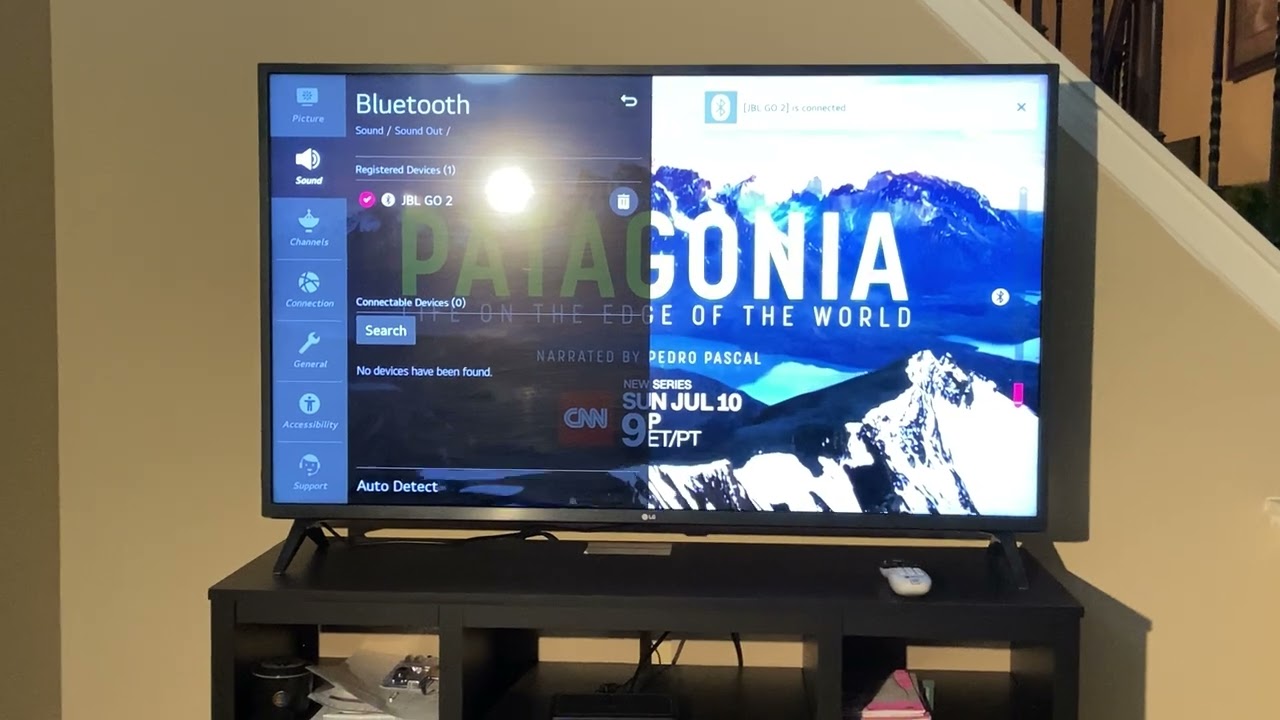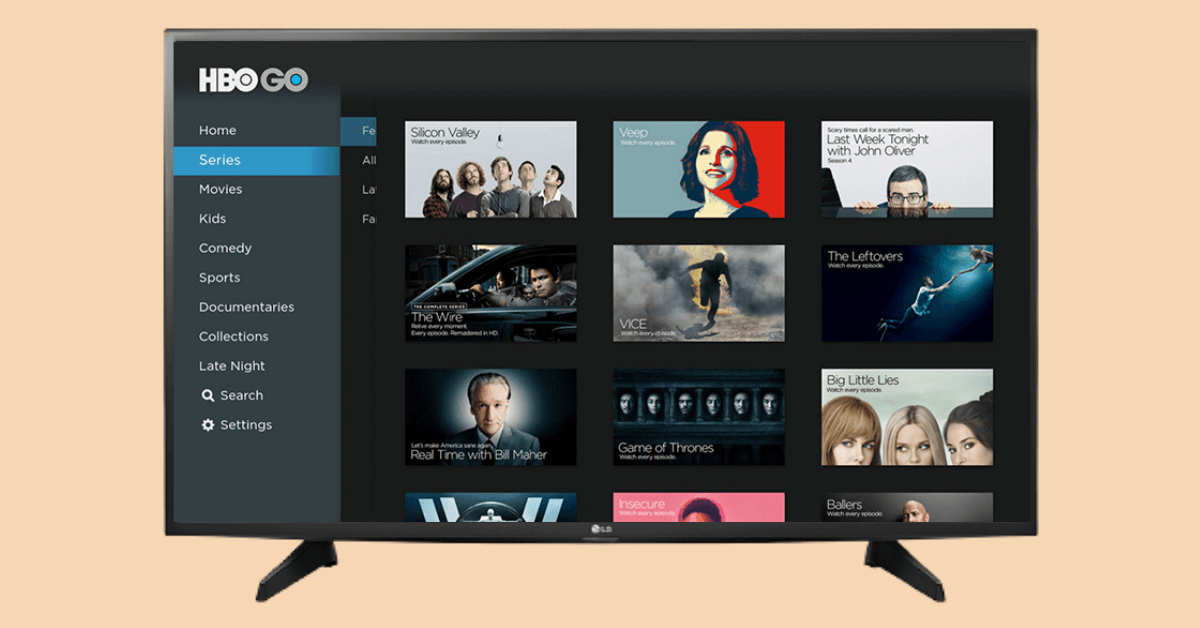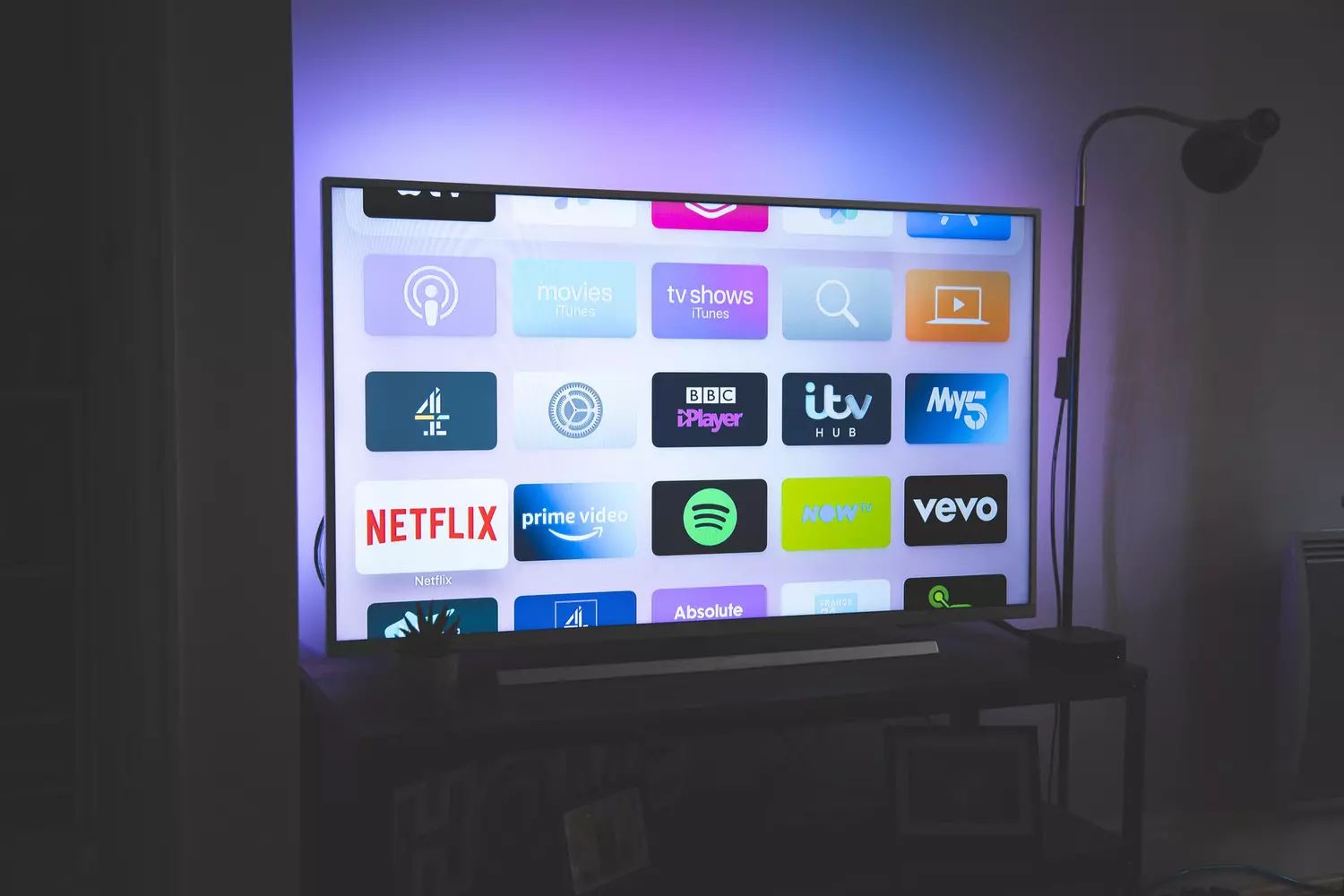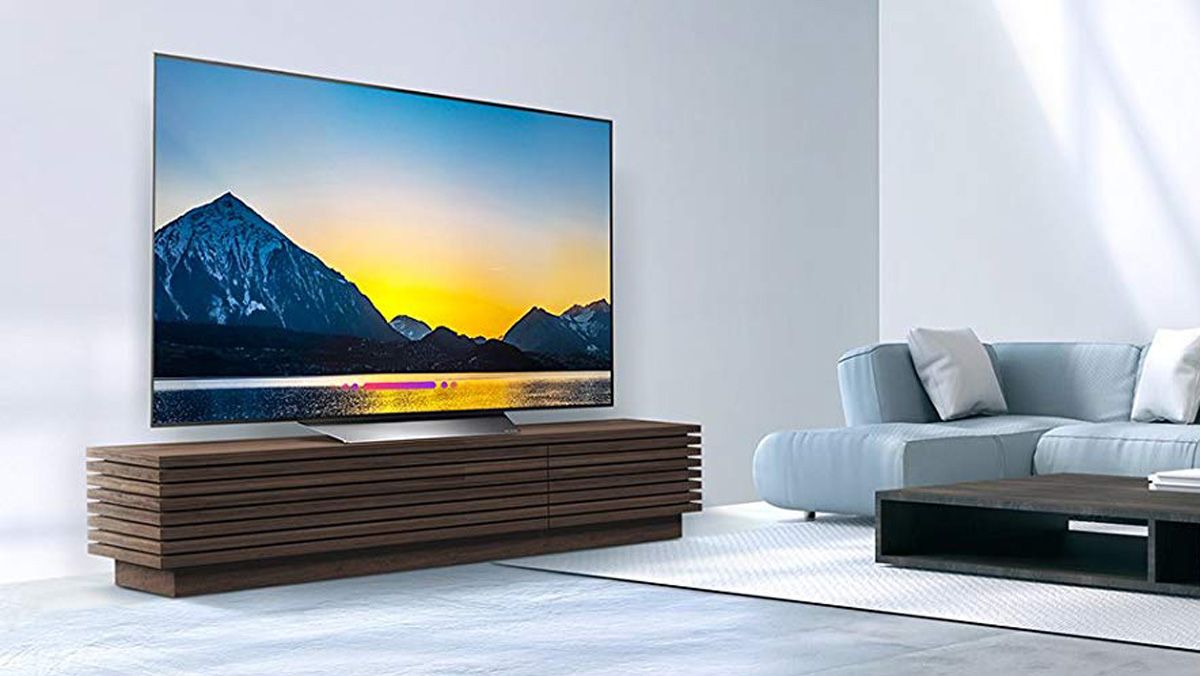Introduction
Welcome to this comprehensive guide on how to adjust the privacy settings on your LG OLED TV. In today’s digital age, where technology is deeply integrated into our lives, it’s crucial to understand and control the information that is being collected and shared by our devices, including our televisions.
LG has prioritized user privacy and offers a range of customizable settings on its OLED TVs, allowing you to fine-tune your privacy preferences. By navigating through these settings, you can ensure that your personal data is protected and that you have full control over how your TV interacts with you and the connected services.
In this guide, we will walk you through step-by-step instructions on accessing and managing the privacy settings on your LG OLED TV. We will explore topics such as personalization settings, voice recognition, data collection and sharing, app permissions, automatic updates, clearing browser data, parental control options, and device linking.
Whether you’re concerned about targeted advertisements, voice commands, or data storage, this guide will empower you to take charge of your LG OLED TV’s privacy settings. Enhancing your privacy not only protects your personal information but also ensures a more tailored and personalized experience while using your TV.
Now, let’s dive into the details and uncover the various privacy settings available on your LG OLED TV, so you can make informed decisions and enjoy a secure and customized viewing experience.
Accessing the Privacy Settings
Before you can start customizing the privacy settings on your LG OLED TV, you need to know how to access them. The steps may vary slightly depending on the model of your TV, but the general process is as follows:
- Power on your LG OLED TV and navigate to the home screen.
- Using the remote control, locate and select the “Settings” option. This is usually represented by a gear icon.
- Within the Settings menu, scroll down and find the “All Settings” option. Select it to open the complete list of settings.
- Look for the “General” or “General Settings” option and select it.
- Now, you should see a list of general settings. Scroll down or navigate to find the “Privacy” or “Privacy Settings” option.
- Select “Privacy” to access the privacy settings of your LG OLED TV.
Once you have successfully accessed the privacy settings, you can proceed to customize them based on your preferences and privacy concerns. It is important to note that your TV may have additional submenus within the privacy settings, which we will explore in the subsequent sections.
It is recommended to revisit the privacy settings periodically to stay updated on any changes and ensure that your TV continues to align with your privacy needs. With easy access to privacy settings, you can have peace of mind knowing that you are in control of the information shared by your LG OLED TV.
Understanding the Privacy Policy
As a responsible user, it’s essential to have a clear understanding of the privacy policy associated with your LG OLED TV. The privacy policy outlines how LG collects, uses, and shares the data generated by your TV. By reviewing and understanding the privacy policy, you can make informed decisions about the privacy settings you want to enable or disable.
To access the privacy policy on your LG OLED TV, follow these steps:
- Go to the privacy settings menu, as described in the previous section.
- Locate the “Privacy Policy” option and select it.
- A new window will open, displaying the privacy policy document.
- Take your time to read through the policy carefully, paying attention to important sections such as data collection, data storage, data sharing, and user consent.
The privacy policy provides valuable insights into LG’s commitment to protecting your privacy and the measures taken to safeguard your data. It may also include information about how LG handles sensitive data, such as voice interactions or browsing history.
If you have any concerns or questions regarding specific sections of the privacy policy, don’t hesitate to contact LG’s customer support for clarification. Understanding the privacy policy is vital in ensuring that you have a clear picture of how your TV handles your data and allows you to make informed choices about your privacy settings.
Remember, it’s always a good practice to periodically review the privacy policy to keep up with any updates or changes implemented by LG. Stay informed and stay in control of your personal information.
Personalization Settings
Personalization settings on your LG OLED TV allow you to tailor your viewing experience according to your preferences. These settings enable your TV to provide personalized recommendations, suggestions, and content based on your usage patterns. However, if you value your privacy and want to limit the amount of personal data collected by your TV, it’s important to review and adjust these settings as needed.
To access personalization settings on your LG OLED TV, follow these steps:
- Open the privacy settings as described earlier.
- Navigate to the “Personalization” or “Customization” section.
- In this section, you can individually enable or disable various personalization features, such as personalized ads, content recommendations, and targeted promotions.
If you prefer a more privacy-oriented experience, consider disabling the personalization settings. Keep in mind that disabling these settings may result in a more generic viewing experience, where the TV does not provide personalized recommendations or suggestions based on your preferences.
While personalization can be convenient and enhance your TV experience, it’s important to strike a balance between customization and privacy. By reviewing and adjusting personalization settings on your LG OLED TV, you can ensure that your viewing habits are not excessively tracked or used for targeted advertising purposes.
Remember to regularly revisit these settings to verify that they align with your privacy needs and preferences. By customizing personalization settings to your comfort level, you can strike a balance between convenience and privacy, creating a viewing experience that is tailored to you while protecting your personal information.
Voice Recognition Settings
Voice recognition technology has become increasingly common in smart TVs, including LG OLED TVs. This functionality allows you to control your TV using voice commands, providing a convenient and hands-free way to navigate through menus, search for content, and control various features. However, it’s important to understand the privacy implications of voice recognition and ensure that the settings align with your privacy preferences.
To access and manage voice recognition settings on your LG OLED TV, follow these steps:
- Open the privacy settings on your TV, as outlined earlier.
- Navigate to the “Voice Recognition” or “Voice Control” section.
- Here, you can choose to enable or disable voice recognition functionality.
- Review any additional settings related to voice commands, such as sensitivity, voice models, or personalized voice recognition profiles.
Enabling voice recognition allows your TV to capture and process voice commands. This data is typically sent to LG servers for analysis and interpretation. It’s important to note that if you disable voice recognition, some voice-controlled features may not be available to you.
If you’re concerned about privacy, you may choose to disable voice recognition or adjust the settings to limit the data collected. Keep in mind that disabling voice recognition might require you to rely on the traditional remote control or other input methods to navigate your TV’s interface.
Regularly reviewing and adjusting your voice recognition settings can help ensure that you have control over the voice data collected by your LG OLED TV. By understanding and managing these settings, you can strike a balance between convenience and privacy while using voice commands to interact with your TV.
Data Collection and Sharing
Like most smart devices, LG OLED TVs collect and utilize certain data to improve the user experience, provide personalized content, and optimize their services. Understanding how data is collected and shared is crucial for maintaining your privacy. Thankfully, LG provides options to control the extent to which your data is collected and shared.
To access and manage data collection and sharing settings on your LG OLED TV, follow these steps:
- Access the privacy settings menu on your TV.
- Locate the “Data Collection” or “Data Sharing” section.
- Within this section, you will find various options related to data collection, such as viewing history, app usage, and device information.
- Review each setting and decide whether you want to enable or disable it based on your privacy preferences.
By carefully reviewing and adjusting these settings, you can control the amount of data collected and shared by your LG OLED TV. For example, you can choose to disable the collection of viewing history or limit app usage information.
In addition to adjusting settings on your TV, LG may also provide options to review and manage your data through their online support portal or mobile applications. It’s worth exploring these additional resources to ensure that you have comprehensive control over your data.
Regularly revisiting these settings and reviewing your data collection preferences can help you maintain a balance between personalization and privacy. Being mindful of the data collected by your LG OLED TV empowers you to make informed decisions about sharing your information and enjoy a more secure entertainment experience.
App Permissions
Your LG OLED TV may offer a range of applications that enhance your entertainment experience. These apps may require certain permissions to function properly and provide the desired features. It’s important to review and manage app permissions to maintain control over the data accessed by these applications.
To manage app permissions on your LG OLED TV, follow these steps:
- Navigate to the privacy settings menu on your TV.
- Look for the “App Permissions” or “Application Settings” section.
- Within this section, you will find a list of installed apps on your TV.
- Select an app to view and adjust its permissions.
- Review each permission individually and decide whether to enable or disable it based on your privacy preferences.
Common app permissions may include access to your photos, videos, location, or microphone. Be selective with the permissions you grant to each app and only provide access to the data that is essential for the app’s intended functionality.
Regularly reviewing and managing app permissions ensures that your data remains protected and that apps have limited access to your personal information. Additionally, it’s a good practice to stay current with app updates, as developers often release updates to address security and privacy concerns.
By actively managing app permissions on your LG OLED TV, you can enjoy the benefits of various applications while protecting your privacy and maintaining control over the data accessed by these apps.
Automatic Updates
Automatic updates ensure that your LG OLED TV has the latest features, bug fixes, and security patches. These updates are essential for maintaining the performance, functionality, and security of your TV. However, it’s important to understand the implications of automatic updates when it comes to privacy and control over your device.
By default, most LG OLED TVs are set to receive automatic updates. This means that your TV will automatically download and install software updates as they become available. While this convenience ensures that you stay up to date with the latest improvements, it’s crucial to review and manage the automatic update settings according to your preferences.
To access and manage automatic update settings on your LG OLED TV, follow these steps:
- Navigate to the general settings menu on your TV.
- Look for the “Software Update” or “Update Settings” section.
- Within this section, you can typically find options to manage automatic updates.
- Here, you can choose to enable or disable automatic updates, select the frequency of updates, or opt for manual updates.
Disabling automatic updates allows you to have more control over the timing and installation of software updates. However, it’s important to remember that by opting out of automatic updates, you may miss out on crucial security patches and performance improvements.
Regularly reviewing and adjusting the automatic update settings ensures that you have control over the software updates on your LG OLED TV. Strike a balance between convenience and privacy by selecting the update settings that align with your preferences, keeping your device secure while maintaining control over the installation process.
Remember to periodically check for manual updates and install them when available, as they often address security vulnerabilities and enhance the overall functionality of your TV.
Clearing Browser Data
If your LG OLED TV has a built-in web browser, it’s important to understand how to clear your browsing data to maintain your privacy and free up storage space. Just like on a computer or smartphone, your TV’s browser stores information such as browsing history, cookies, and cached files. Clearing this data not only protects your privacy but also helps optimize the performance of the browser.
To clear browser data on your LG OLED TV, follow these steps:
- Open the web browser app on your TV.
- Access the browser settings, usually represented by an icon or menu button.
- Look for the “Privacy” or “Clear Browsing Data” option.
- Select the types of data you want to clear, such as browsing history, cookies, or cached files.
- Confirm the action and wait for the TV to clear the selected data.
Clearing your browser data regularly is especially important if you share your TV with others or if you frequently use online banking or other sensitive websites. By clearing your browsing data, you can help prevent unauthorized access to your personal information and ensure that your online activities remain private.
Keep in mind that clearing your browser data will log you out of any saved accounts and remove any personalized settings on websites. However, this process can be beneficial in maintaining your privacy, as it removes traces of your activity on the TV’s browser.
It’s a good practice to periodically clear your browser data, especially if you notice your TV’s browser slowing down or if you’re concerned about your online privacy. By doing so, you can enjoy a faster and safer browsing experience on your LG OLED TV.
Parental Control Options
Parental control options on your LG OLED TV allow you to restrict the content that can be accessed, ensuring a safe and age-appropriate viewing experience for your children. With these controls, you can set limits on what can be watched based on ratings or specific content categories. It’s important to familiarize yourself with these options to protect your children from accessing inappropriate content.
To access and configure parental control options on your LG OLED TV, follow these steps:
- Open the settings menu on your TV.
- Locate the “Parental Controls” or “Child Lock” section.
- Within this section, you will find various options to customize the content restrictions.
- Set a PIN code that will be required to access or make changes to the parental control settings.
- Configure the desired restrictions, such as blocking specific channels, setting viewing time limits, or restricting access to certain content categories.
By utilizing parental control options, you can ensure that your children only have access to age-appropriate content on your LG OLED TV. These settings provide peace of mind, allowing you to create a safe and secure environment for your family.
Remember to periodically review and update the parental control settings as your children grow older and their viewing preferences change. Additionally, it’s important to educate your children about responsible screen time and online behavior to complement the effectiveness of parental controls.
By leveraging the parental control options available on your LG OLED TV, you can strike a balance between allowing your children to enjoy entertainment while maintaining control over the content they consume.
Device Linking and Connected Services
Your LG OLED TV may offer the ability to connect with other devices, such as smartphones, tablets, gaming consoles, or streaming devices. This connectivity expands the functionality of your TV and allows for seamless integration with various services. However, it’s important to understand the privacy implications of device linking and the connected services.
To manage device linking and connected services on your LG OLED TV, follow these steps:
- Access the settings menu on your TV.
- Navigate to the “Device Connectivity” or “Connected Devices” section.
- Here, you will find options to link devices, such as Bluetooth pairing, Wi-Fi connections, or HDMI connections.
- Review and manage the permissions and settings associated with each connected device or service.
- Consider disabling or unlinking any devices or services that are no longer in use or pose privacy concerns.
By reviewing and managing device linking and connected services, you can maintain control over the data shared between your LG OLED TV and external devices. Additionally, it’s important to familiarize yourself with the privacy policies and terms of service of any connected services to understand how your data may be processed or shared.
Regularly reviewing the connected devices and services adds an extra layer of security and privacy to your LG OLED TV. By consciously managing the connections and permissions, you have more control over the information and access granted to external devices and services.
Remember to also keep your connected devices, such as smartphones or tablets, up to date with the latest security patches and firmware updates. This helps minimize any potential vulnerabilities that could be exploited to compromise your privacy.
By being mindful of device linking and connected services, you can fully harness the capabilities of your LG OLED TV while maintaining control over your privacy and data sharing.
Conclusion
Managing privacy settings on your LG OLED TV is an essential step in protecting your personal information and maintaining control over your viewing experience. By accessing and customizing these settings, you can ensure that your data is handled responsibly and that your privacy preferences are respected.
In this guide, we covered various aspects of privacy settings on your LG OLED TV, including accessing the settings, understanding the privacy policy, personalization settings, voice recognition settings, data collection and sharing, app permissions, automatic updates, clearing browser data, parental control options, and device linking and connected services.
By following the instructions provided in each section, you can navigate through the privacy settings with ease and make informed decisions that align with your privacy preferences.
Remember, regularly reviewing and adjusting these settings is crucial to stay up to date with any changes and ensure that your TV continues to respect your privacy needs.
It is recommended to revisit the privacy settings periodically to stay updated on any changes and ensure that your TV continues to align with your privacy needs. With easy access to privacy settings, you can have peace of mind knowing that you are in control of the information shared by your LG OLED TV.
By taking the time to review and adjust your privacy settings, you can strike a balance between personalization and privacy, creating a viewing experience that is tailored to you while ensuring the security of your personal information.
Now that you have a comprehensive understanding of the privacy settings on your LG OLED TV, you can enjoy your entertainment with confidence, knowing that your privacy is being protected.

























